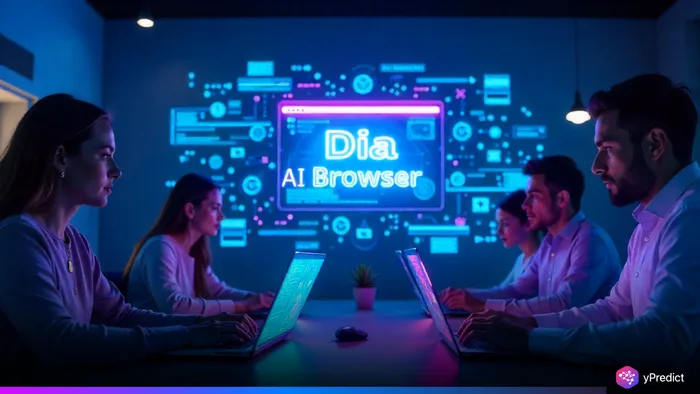
The Browser Company has officially taken its next big step with the release of the Dia AI Browser’s $20 monthly Pro Plan. This marks a major shift for the company, which had previously kept its AI browser completely free of charge. The new subscription unlocks unlimited AI chat for users, giving them the freedom to interact without hitting usage caps.
Dia is still in its early stages of development, currently at version 0.41, but the Pro option is already available with a 14-day free trial. Users can download the browser even if they were not on the Arc waitlist. This move signals a strategic change in how The Browser Company plans to monetize its latest product and expand its presence in the growing market of AI-powered browsers.
The Pro Plan focuses entirely on removing chat restrictions, which could appeal to those who rely heavily on AI for research, productivity, or creative tasks. While the company has not disclosed the exact limits of the free tier, users are expected to encounter prompts encouraging an upgrade once those limits are reached.
Why the Dia AI Browser is Adopting a Paid Model
The introduction of the Pro Plan is not just about generating revenue. According to The Browser Company’s CEO Josh Miller, plans will range from $5 to several hundred dollars per month, depending on usage. A free version will still be available for those who only use the browser occasionally.
One of the main drivers behind the subscription model is the cost of integrating advanced AI models. Dia does not rely on just one provider. It intelligently routes user queries to ChatGPT, Claude, or Gemini, depending on which is most likely to produce the best results. This multi-model approach creates a smoother experience but also significantly increases operational costs.
Given these expenses, offering unlimited AI chat for a flat fee helps the company manage the growing demand from users while covering its backend costs.
Competing in a Crowded AI Browser Market
The Dia AI Browser is entering an increasingly competitive space. Microsoft Edge now features Copilot, which can process and respond to content from open tabs. Brave has introduced its Leo AI sidebar. Google Chrome users can access Gemini through its AI Pro plan for $19 a month. Perplexity has launched an early version of its Comet browser for premium subscribers.
Adding to the pressure, Reuters recently reported that OpenAI is close to launching its own AI-powered browser. With so many AI-powered browsers emerging, Dia will have to prove that its unique combination of contextual AI chat and user interface can stand out.
Why Some Users Still Prefer Arc
Despite the launch of Dia, many users remain loyal to Arc, the original browser from The Browser Company. Arc’s appeal lies in its productivity features, such as numerous pinned tabs for quick access to frequently used sites. For many, these tools outweigh Dia’s current AI capabilities.
Some users even argue that a version of Arc equipped with Dia’s AI sidebar would be worth the $20 monthly price tag. While Dia aims to reach hundreds of millions of users, Arc could have thrived as a premium, power-user-focused platform with a sustainable business model.
Can the Dia AI Browser Compete with the Giants?
The challenge for the Dia AI Browser is straightforward. It has a stylish interface and unlimited AI chat in its Pro Plan, but if its features cannot distinguish it from browsers like Chrome, Edge, or Brave, the browser will need to evolve quickly, if at all.
Dia AI Browser’s success may depend on evolving past its current state quickly. If it can have enough users to warrant constant development, a wider user base can lead to more investments, and allow The Browser Company to get to know the product and perfect its AI.
The Browser Company has raised approximately $128 million to date, and obviously the investors expect something from the company.
For now the Dia AI Browser is just a promising, but unfinished product. The Pro Plan is a move toward monetization, but if the product can achieve long term adoption in a strong competitive space is yet to be seen.






